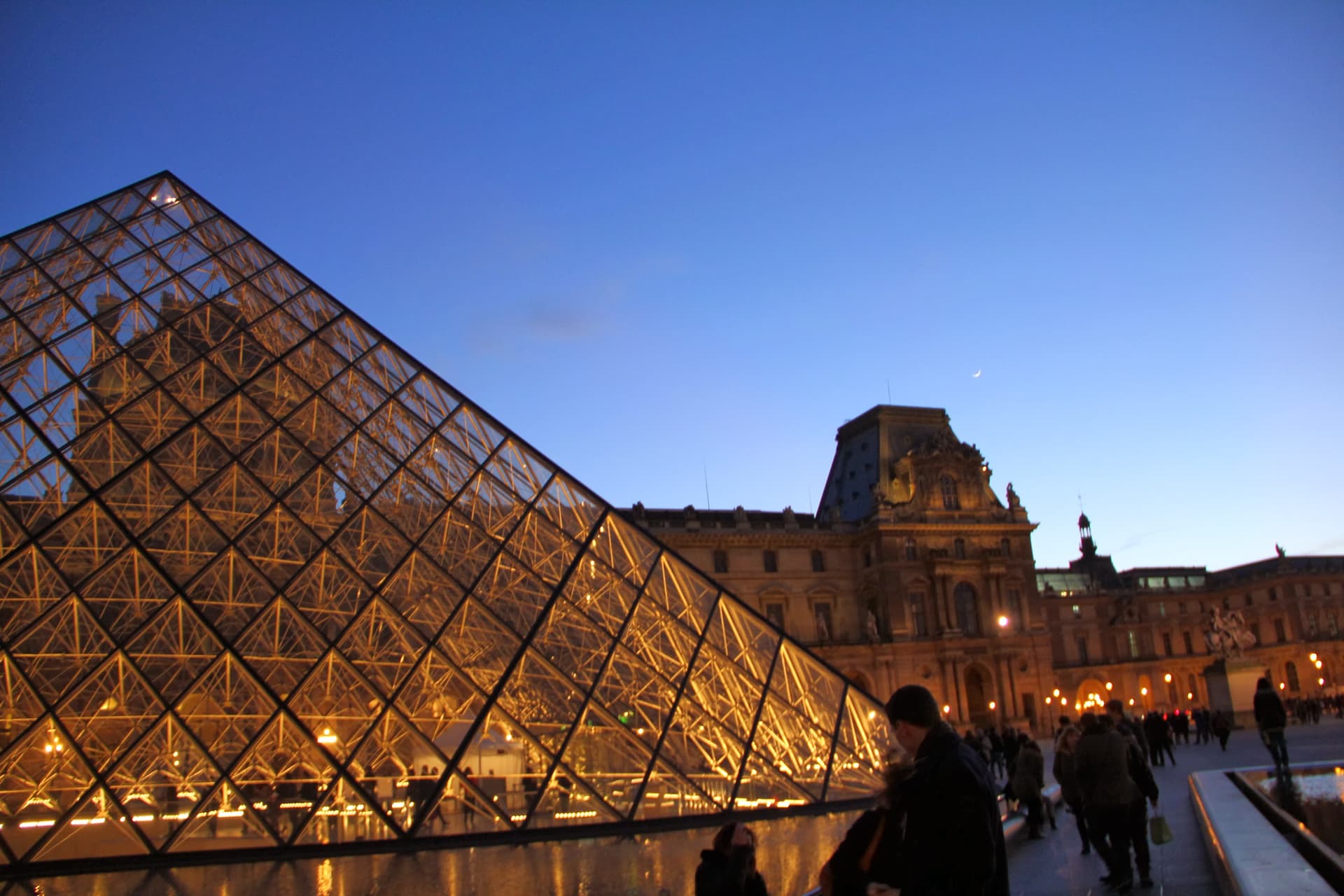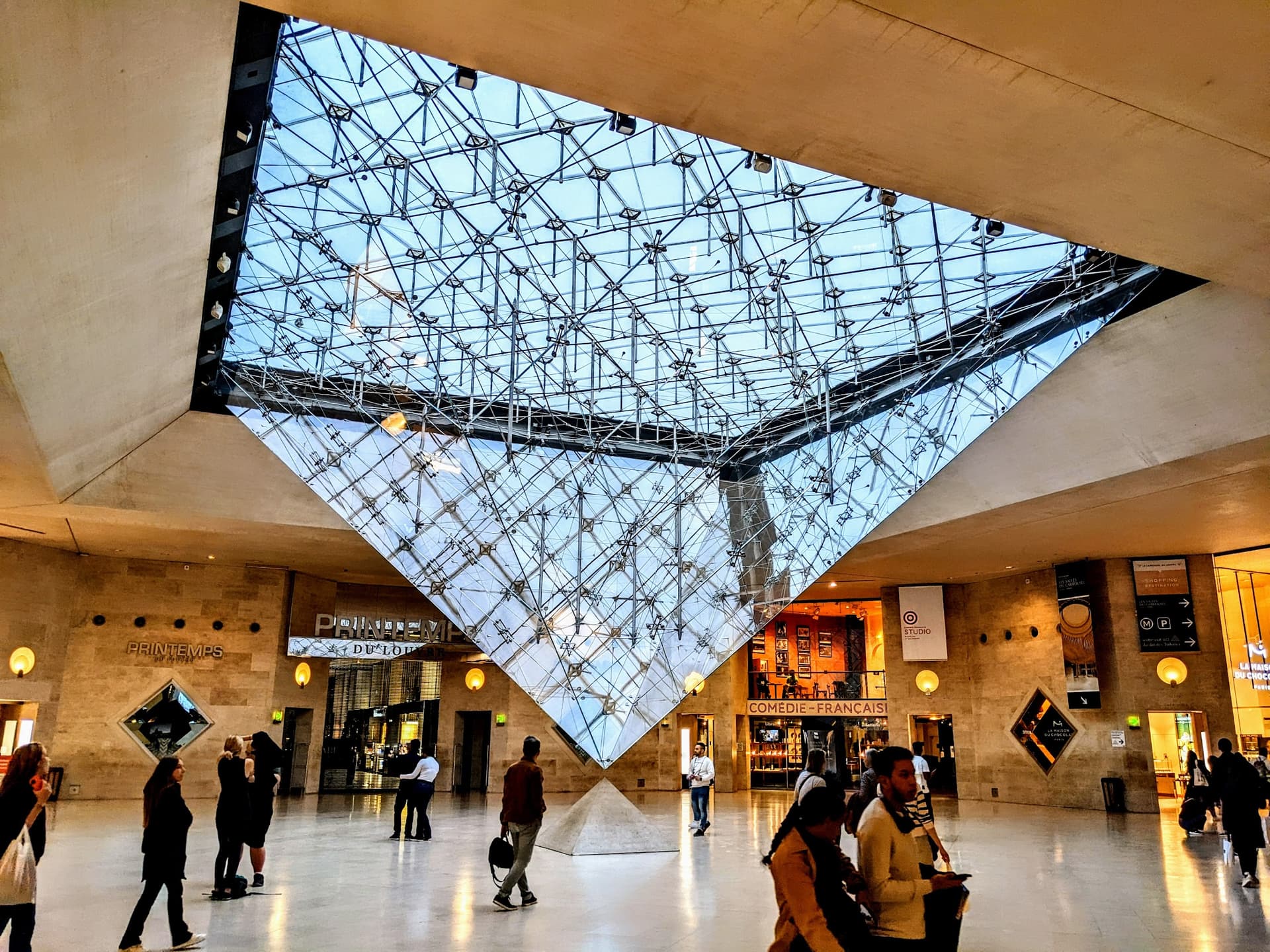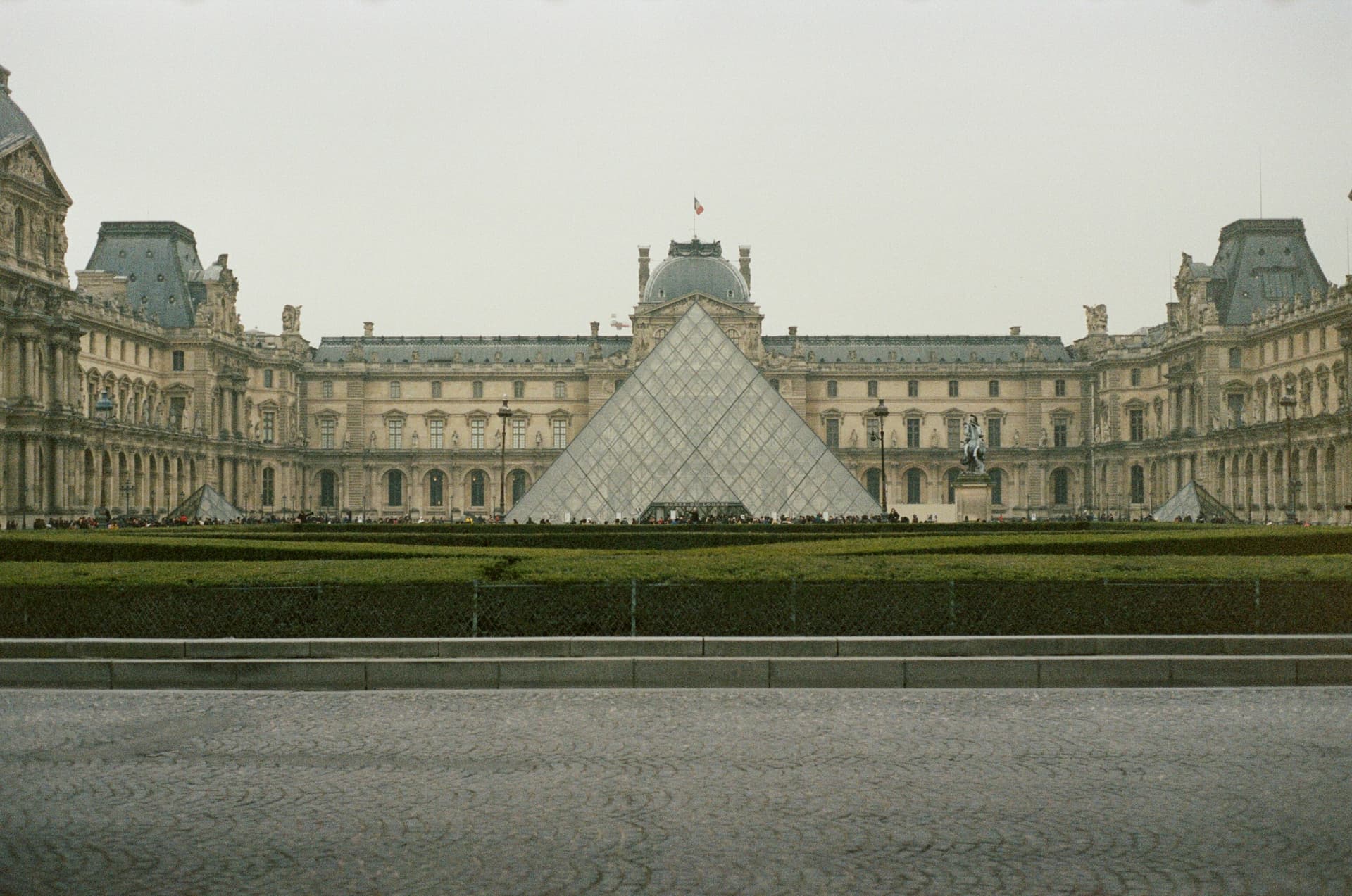Audio GuideLouvre Pyramid
Pyramide du Louvre
Glass pyramid created by I. M. Pei, forming the entranceway into a lower-ground exhibition area.
In the centre of Paris, within the impressive courtyard of the Louvre Palace, stands a remarkable glass pyramid. This modern landmark serves as the entrance to the world-renowned Louvre Museum, home to masterpieces such as the Mona Lisa. The pyramid was designed by I. M. Pei, a distinguished architect chosen by the French president in the early nineteen eighties. At the time, there was a desire among the authorities to expand the museum and better accommodate the growing number of visitors. Rather than constructing more galleries above ground, Pei took a bold approach: he created new spaces beneath the courtyard and crowned the entrance with a sleek glass pyramid.
Pei opted for the pyramid shape after considering ideas such as domes, cubes and other possibilities. He observed that the elegant lines of the Louvre’s historic buildings were best complemented by the pure, striking form of a pyramid. The resulting structure rises to around sixty-six feet, with each side extending over ninety-eight feet. Every glass panel was specially crafted to be crystal clear—with no hint of green or blue—so that the palace would be visible through it. Achieving this flawless effect took French engineers nearly two years of dedicated development.
When the pyramid was unveiled in the late nineteen eighties, it sparked controversy. Many believed that a glass-and-metal structure would be at odds with the museum’s Renaissance grandeur. Some described it as too modern or simply unsuitable. Yet, as the years have passed, the pyramid has become a symbol of Paris itself—confident, luminous, and welcoming to visitors from across the globe.
Below ground, three smaller glass pyramids illuminate the spacious entrance hall, leading visitors towards the museum’s wings. By night, soft lighting creates shimmering reflections across stone and glass, blending the energy of contemporary Paris with the city’s age-old heritage. Looking after the pyramid requires ingenuity—specialist robots and abseiling cleaners scale its sides to ensure the glass remains spotless.
Today, millions of people enter the Louvre through the pyramid every year. Its design has reduced queues considerably, providing tourists and Parisians with a smoother, more uplifting start to their exploration of art. The Louvre Pyramid has become a meeting point between centuries—a place where tradition and innovation come together in the very heart of Paris.



